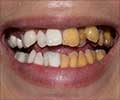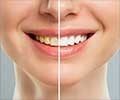Q: Which doctor should I consult for fluorosis?
A: You should consult your primary care physician if you feel you suffer from fluorosis.
Q: Which areas are endemic for fluorosis?
A: Places endemic for fluorosis are usually found at the foot of high mountains. One of the fluoride belts extend through Syria, Jordan, Egypt, Libya, Algeria, Sudan and Kenya and another extends from Turkey through the Asian countries of Iraq, Iran, Afghanistan, India, northern Thailand and China.
Q: Is fluorosis harmful?
A: Fluorosis isn't a disease and doesn't affect the health of your teeth. In most cases, the effect is so subtle that only a dentist would notice it during an examination. The type of fluorosis found in the United States has no effect on tooth function and may make the teeth more resistant to decay.
Q: How much toothpaste causes fluorosis?
A: Even a small, 'pea-sized' amount of toothpaste containing 1,450 ppm fluoride, would contain approximately 0.36–0.72 mg fluoride, which if consumed twice a day could contribute to fluoride levels that would increase the risk of dental fluorosis in children. Hence, toothpaste can be used as per the recommendation of a dentist
Q: How is fluorosis treated?
A: Common fluorosis treatments include:
- Teeth whitening. Your dentist applies bleaching gel to your teeth for a predetermined amount of time
- Difficulty in sleeping through the night due to pain
- Dental veneers
- Dental crowns
- Enamel micro abrasion
Q: Can skeletal fluorosis be reversed?
A: With removal of fluoride exposure, skeletal fluorosis is reversible, but likely impacts for decades.







